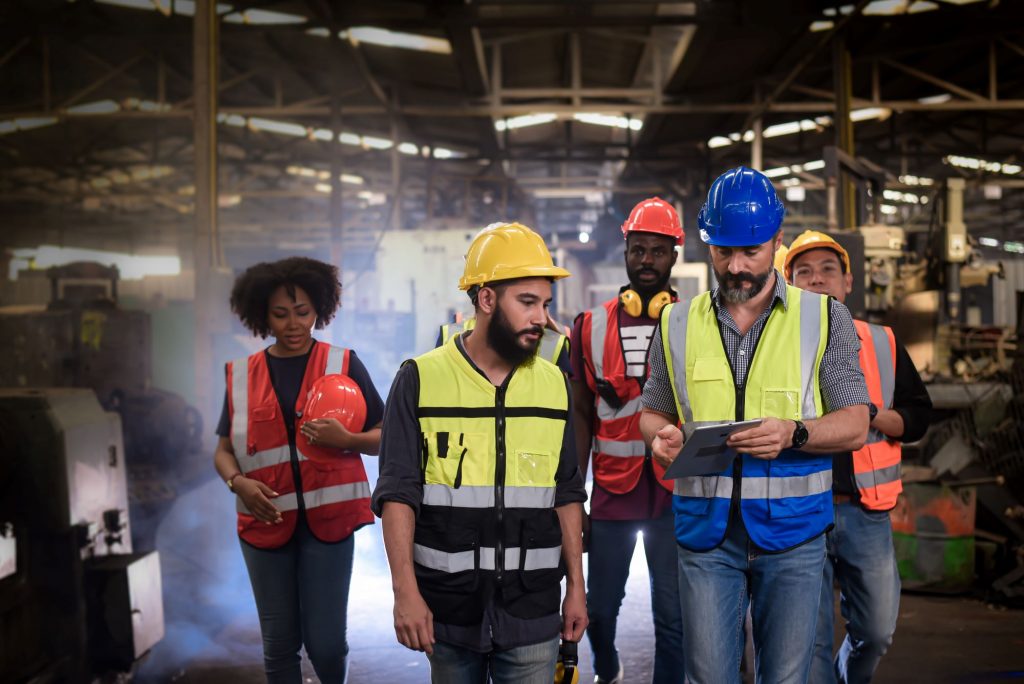
Creating A Fulfilling Workplace: A Guide For Manufacturing Firms
Creating a rewarding work environment isn’t just about maintaining morale—it’s a key component of business success. For manufacturing firms, this can often be a challenging task. Employees are not cogs in the machine; they’re the lifeblood of your operation.
Recognising their value and cultivating a rewarding workplace is essential in boosting productivity and maintaining loyalty. But how can you shape such a positive environment? This guide offers actionable insights and strategies specifically designed for manufacturing firms.
You’ll learn to foster positive company culture, improve communication, and implement effective rewards systems.

Assessing The Current Manufacturing Work Environment
Before seeking to transform the work environment of your manufacturing firm, it’s crucial to take a hard look at its current state. Manufacturing plants often involve complex processes, heavy machinery, and specific challenges that can influence employee satisfaction differently.
A practical starting point is administering employee engagement surveys tailored to the manufacturing industry. These surveys should ask questions that are unique to the manufacturing sector. They cover topics such as the adequacy of safety training, communication efficiency on the plant floor, satisfaction with shift schedules, and the effectiveness of machinery maintenance programs.
Understanding your current environment, particularly in a sector as complex as manufacturing, forms the foundation for meaningful and effective change. With this data in hand, you can design a strategic action plan that not only resolves the identified issues but also focuses on creating a work environment that caters to the needs of your employees.
Integrating Modern Technologies
Integrating modern technology into manufacturing processes has become a significant factor in positive transformation in the sector. With labour-intensive and repetitive tasks being a common characteristic of manufacturing operations, automating such tasks can significantly improve productivity and worker satisfaction.
For example, utilising robotic arms for assembly line tasks or employing AI-powered inspection systems for quality control can reduce worker fatigue and improve job quality. Beyond automation, the advent of Virtual Reality (VR) and Augmented Reality (AR) technologies is rapidly transforming how training is conducted in the manufacturing industry.
These technologies can create realistic, immersive simulations of the manufacturing environment. For example, VR can train workers to handle complex machinery or deal with hazardous situations without exposing them to actual risk.
Moreover, digitised maintenance systems and IoT-enabled equipment can provide real-time updates about machine performance and potential issues. This reduces the possibility of unexpected breakdowns and improves operational efficiency, creating a more predictable and less stressful work environment.
Ensuring Health And Safety
Given the inherent risks associated with heavy machinery, hazardous materials, and high-noise levels, the manufacturing sector necessitates stringent safety protocols. Establishing strong safety guidelines and enforcing strict adherence can significantly reduce the incidence of workplace accidents.
For instance, maintaining up-to-date machine guarding, regular equipment checks, and strict lockout/tagout procedures can prevent injuries related to machinery operation.
In addition to these protocols, fostering a culture of safety vigilance is crucial. Encourage your workforce to promptly report potential safety hazards through mechanisms like safety suggestion boxes or regular safety meetings. Furthermore, routinely conducted safety drills can ensure that all employees know the correct procedures to follow in emergencies.
Personal Protective Equipment (PPE) plays a significant role in ensuring safety in the manufacturing sector. From safety goggles and earplugs to protective footwear and respirators, providing suitable PPE and training workers on their correct usage is a non-negotiable aspect of creating a safe manufacturing environment.

Developing An Effective Rewards System
Rewards and recognition play a significant role in driving job satisfaction. When you acknowledge employees’ efforts, it makes them feel valued. This, in turn, can enhance their motivation, productivity, and loyalty. Remember, a rewarding workplace isn’t just about monetary bonuses; it’s about letting your team know their work matters.
Start by identifying key performance indicators (KPIs) that align with your company’s goals. Next, establish a transparent and fair system to measure these KPIs. Finally, design a diverse range of rewards, not just financial but also other forms like public recognition, additional leave, or opportunities for professional development. Tailor these rewards to suit your staff’s preferences.
Executing In-Depth Training Initiatives
In the manufacturing sector, where rapid technological advancements and process evolutions are the norms, skill enhancement becomes an indispensable part of employee development. Offering in-depth training programs empowers your workers to enhance their performance and provides them with personal and professional growth avenues.
These programs could focus on various areas, such as operating cutting-edge machinery, implementing quality control techniques, or even soft skills like team management and problem-solving.
For example, a training program on Computer Numerical Control (CNC) machines would enable workers to handle these machines and provide them with personal achievement efficiently. Such upskilling initiatives can increase employee satisfaction and foster a sense of loyalty toward the organisation.
Conclusion
Building a fulfilling manufacturing workplace involves understanding the sector’s unique challenges and integrating modern technologies. Additionally, you need to prioritise safety measures and offer comprehensive training programs. Proactively addressing these elements can significantly enhance job satisfaction and loyalty among employees.
Furthermore, these practices can improve productivity and operational efficiency, driving long-term success. Therefore, investing in a fulfilling work environment is a strategic move for any manufacturing firm’s growth.
